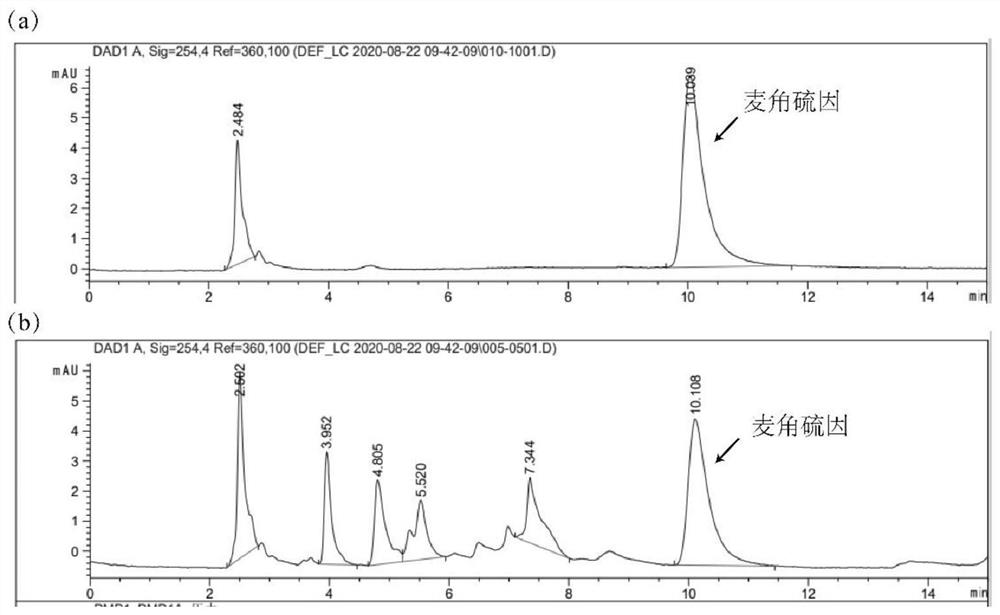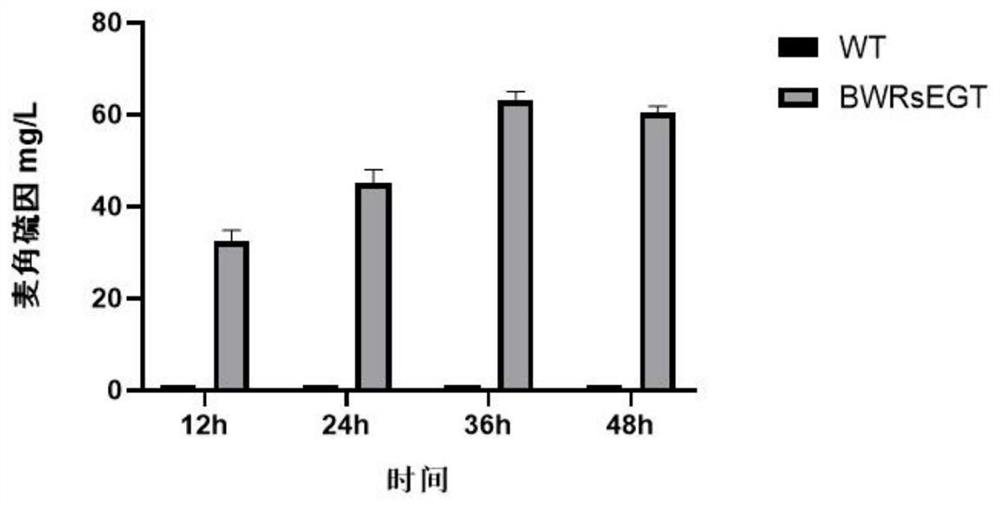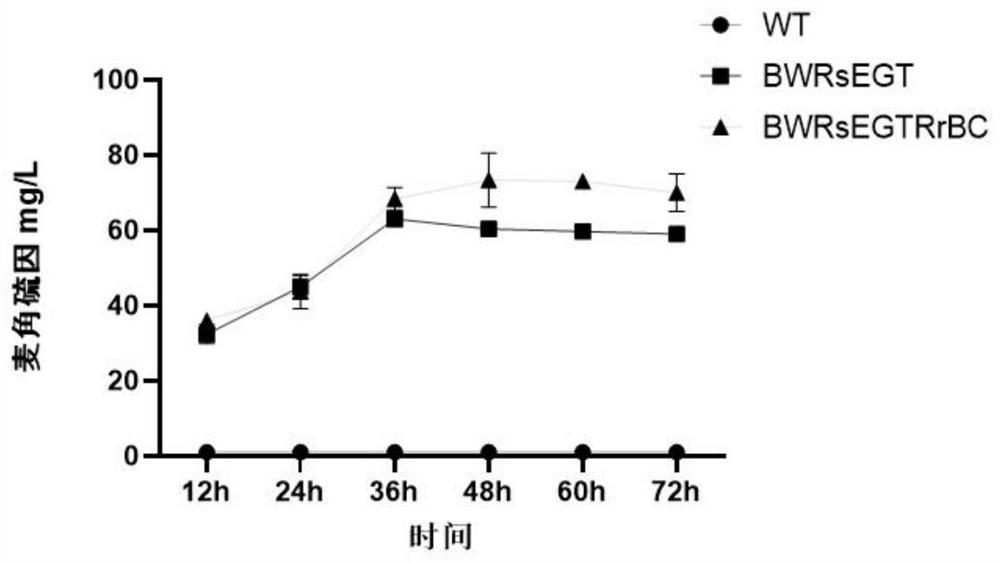Genetically engineered bacterium for high-yield production of ergothioneine
An ergothioneine and genome technology, applied in the field of genetic engineering, can solve the problems of high ergothioneine price, low production capacity, hindering the development and promotion of the ergothioneine market, and achieve the effect of expanding market supply
- Summary
- Abstract
- Description
- Claims
- Application Information
AI Technical Summary
Problems solved by technology
Method used
Image
Examples
Embodiment 1
[0041] Example 1: Construction of recombinant Escherichia coli containing ergothioneine synthesis gene cluster
[0042] (1) The ergothioneine synthesis genes RsEGT1 (genebank: RCH97401.1) and RsEGT2 (genebank: RCI05990.1) derived from Rhizopus stolonifer were selected, and the nucleotide sequences were obtained after codon optimization for Escherichia coli The gene fragments shown in SEQ ID NO. 1 and SEQ ID NO. 2 were subjected to DNA synthesis to obtain candidate genes.
[0043] (2) Design relevant primers (Table 1), take the RsEGT1 gene fragment whose nucleotide sequence is as shown in SEQ ID NO.1 in step (1) as a template, and use primers F1 and R1 to amplify the fragment RsEGT1 by PCR; The RsEGT2 gene fragment whose nucleotide sequence is shown in SEQ ID NO. 2 is used as a template, and the fragment RsEGT2 is obtained by PCR amplification using primers F2 and R2. Using pBAD / HisA vector (Beijing Jiangchen Biotechnology) as the template, the linear pBAD vector was amplified...
Embodiment 2
[0053] Example 2: Optimization of ergothioneine synthesis pathway
[0054] (1) Two ergothioneine synthases, the gene RrEgtB (NCBI Reference Sequence: WP_038682659.1) and the gene RrEgtC (NCBI Reference Sequence: WP_003419806.1) derived from Rubrobacter radiotolerans, were selected to target E. After optimization, gene fragments whose nucleotide sequences are shown in SEQ ID NO. 3 and SEQ ID NO. 4 are obtained, and DNA synthesis is performed to obtain candidate genes.
[0055] (2) Design relevant primers (Table 1), take the RrEgtB gene fragment whose nucleotide sequence is shown in SEQ ID NO.3 as a template, and use primers F4 and R4 to amplify the fragment RrEgtB by PCR; The RrEgtC gene fragment shown in SEQ ID NO. 4 was used as a template, and the fragment RrEgtC was obtained by PCR amplification using primers F5 and R5. Using R3 and pBAD-F as primers and pBAD-RsEGT1-RsEGT2 plasmid as template, PCR was performed to obtain the vector fragment. Fragment RrEgtB, fragment RrEgt...
Embodiment 3
[0057] Example 3: Construction of Chassis Cells
[0058] Chromosomal editing of Escherichia coli BW25113 using CRISPR / CAS9 gene editing technology to enhance the supply of three precursor amino acids and adenosylmethionine (SAM). CRISPR-Cas9 System".
[0059] (1) CRISPR / CAS9 gene editing technology:
[0060] (1) Preparation of DNA fragments: use CRISPR / CAS9 gene editing technology for gene knockout, design primer pairs to amplify the upstream and downstream homology arms of the target gene with 100-500bp each, and fuse the upstream and downstream fragments by fusion PCR to obtain DNA fragments , recovered by DNA gel recovery or PCR product purification kit. Gene insertion using CRISPR / CAS9 gene editing technology amplifies the target gene while amplifying the upstream and downstream homology arms of the insertion site, and fuses the square fragments of fusion PCR to obtain DNA fragments.
[0061] (2) Design of sgRNA: Use the CRISPR-ERA website (crispr-era.stanford.edu) to d...
PUM
 Login to View More
Login to View More Abstract
Description
Claims
Application Information
 Login to View More
Login to View More - R&D
- Intellectual Property
- Life Sciences
- Materials
- Tech Scout
- Unparalleled Data Quality
- Higher Quality Content
- 60% Fewer Hallucinations
Browse by: Latest US Patents, China's latest patents, Technical Efficacy Thesaurus, Application Domain, Technology Topic, Popular Technical Reports.
© 2025 PatSnap. All rights reserved.Legal|Privacy policy|Modern Slavery Act Transparency Statement|Sitemap|About US| Contact US: help@patsnap.com



